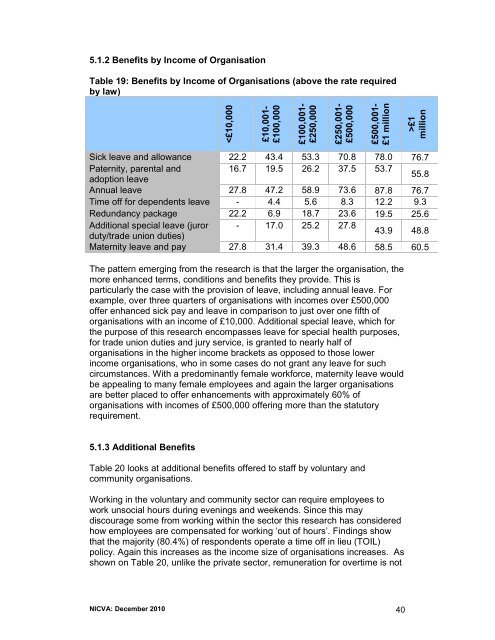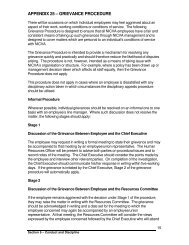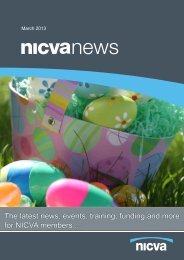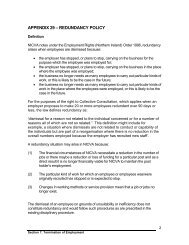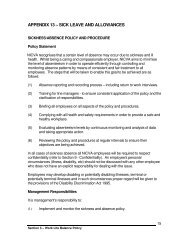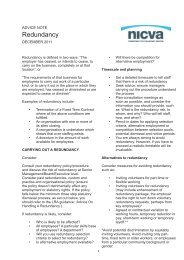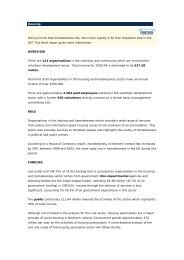Salary Survey 2010 - Nicva
Salary Survey 2010 - Nicva
Salary Survey 2010 - Nicva
- No tags were found...
Create successful ePaper yourself
Turn your PDF publications into a flip-book with our unique Google optimized e-Paper software.
5.1.2 Benefits by Income of OrganisationTable 19: Benefits by Income of Organisations (above the rate requiredby law)£1millionSick leave and allowance 22.2 43.4 53.3 70.8 78.0 76.7Paternity, parental and16.7 19.5 26.2 37.5 53.7adoption leave55.8Annual leave 27.8 47.2 58.9 73.6 87.8 76.7Time off for dependents leave - 4.4 5.6 8.3 12.2 9.3Redundancy package 22.2 6.9 18.7 23.6 19.5 25.6Additional special leave (juror - 17.0 25.2 27.8duty/trade union duties)43.9 48.8Maternity leave and pay 27.8 31.4 39.3 48.6 58.5 60.5The pattern emerging from the research is that the larger the organisation, themore enhanced terms, conditions and benefits they provide. This isparticularly the case with the provision of leave, including annual leave. Forexample, over three quarters of organisations with incomes over £500,000offer enhanced sick pay and leave in comparison to just over one fifth oforganisations with an income of £10,000. Additional special leave, which forthe purpose of this research encompasses leave for special health purposes,for trade union duties and jury service, is granted to nearly half oforganisations in the higher income brackets as opposed to those lowerincome organisations, who in some cases do not grant any leave for suchcircumstances. With a predominantly female workforce, maternity leave wouldbe appealing to many female employees and again the larger organisationsare better placed to offer enhancements with approximately 60% oforganisations with incomes of £500,000 offering more than the statutoryrequirement.5.1.3 Additional BenefitsTable 20 looks at additional benefits offered to staff by voluntary andcommunity organisations.Working in the voluntary and community sector can require employees towork unsocial hours during evenings and weekends. Since this maydiscourage some from working within the sector this research has consideredhow employees are compensated for working ‘out of hours’. Findings showthat the majority (80.4%) of respondents operate a time off in lieu (TOIL)policy. Again this increases as the income size of organisations increases. Asshown on Table 20, unlike the private sector, remuneration for overtime is notNICVA: December <strong>2010</strong> 40


